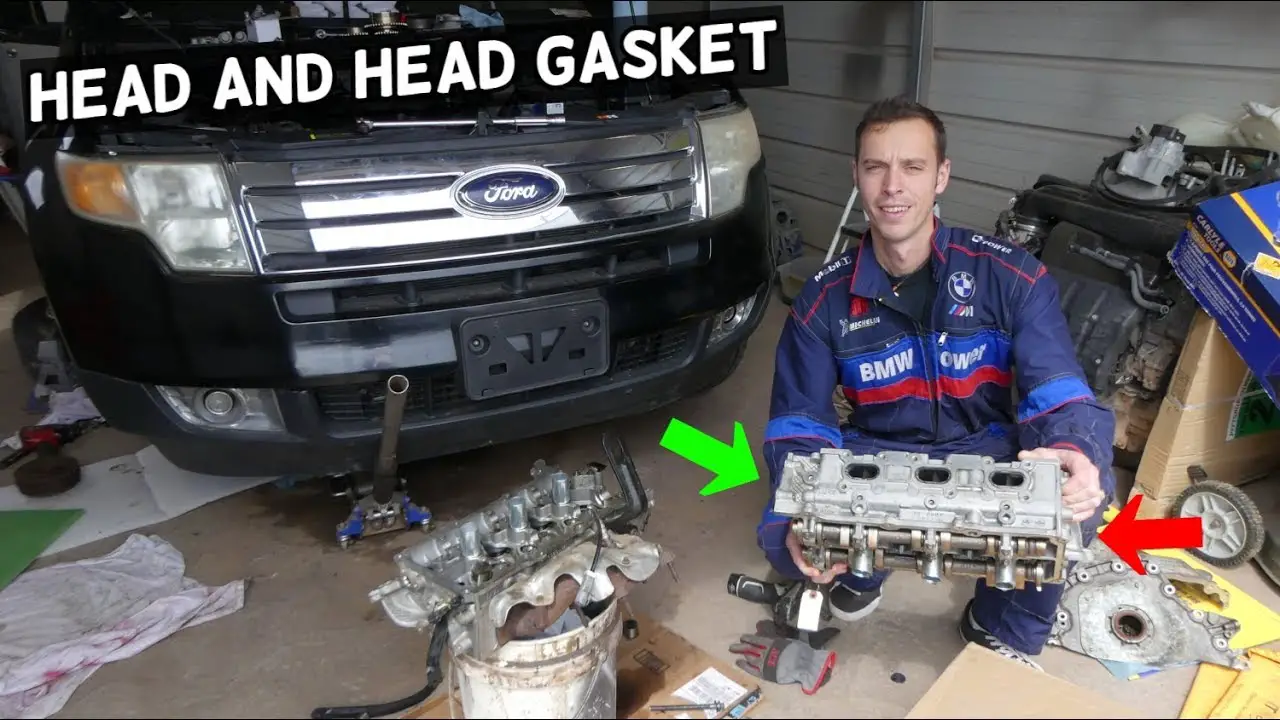The 2017 Silverado, a trusted workhorse of the Chevrolet lineup, has garnered a strong reputation for its reliability and rugged performance. As a favored choice among truck enthusiasts, it has consistently delivered in power, versatility, and style. However, even the most dependable vehicles can encounter issues, and transmission problems can be a concerning reality for Silverado owners.
The Importance of the 2017 Silverado
The 2017 Chevrolet Silverado is not just a vehicle; it’s a symbol of strength and capability on the road. Whether you’re hauling heavy loads, embarking on off-road adventures, or simply using it as your daily driver, this pickup truck is designed to meet the demands of various lifestyles. Its V8 engines, advanced towing capabilities, and spacious interiors have made it a favorite among those who seek performance without compromise.
Common Transmission Problems
While the 2017 Silverado is renowned for its durability, owners have reported several common transmission problems that can hinder the driving experience. These issues may include gear slipping, rough shifting, transmission overheating, and leaks. These problems can lead to costly repairs and potential safety hazards.
Preview of Solutions
This comprehensive guide will delve into the world of the 2017 Silverado’s transmission problems. We will provide a step-by-step approach to diagnose and address these issues, offering practical solutions to keep your Silverado running smoothly. From preventive maintenance tips to tackling specific problems head-on, this article will equip you with the knowledge and confidence to effectively address transmission issues and ensure that your Silverado continues to be the reliable companion you’ve come to depend on.
Understanding Transmission Problems
The transmission of a vehicle is a complex and vital component, often referred to as the gearbox. Its role in the 2017 Silverado, and in any vehicle, is fundamental to the operation of the entire drivetrain. To understand transmission problems, one must first grasp its purpose and function.
What is a Transmission?
A transmission, or gearbox, is a sophisticated mechanical device responsible for regulating the power generated by the engine and transmitting it to the wheels. It plays a pivotal role in controlling the speed and torque of the vehicle, allowing it to move forward or backward at different speeds. Essentially, the transmission is the intermediary between the engine’s power and the vehicle’s wheels.
The Role of Transmission in a Vehicle
In the case of the 2017 Silverado, this transmission is designed to manage the considerable power generated by its V8 engines, ensuring that it can perform tasks such as towing heavy loads, navigating challenging terrains, and providing a smooth and responsive driving experience. Without a functioning transmission, a vehicle’s engine power would be rendered useless, and it would be unable to move effectively.
Common Transmission Problems Specific to the 2017 Silverado

Now, let’s delve into the specific transmission problems that 2017 Silverado owners may encounter:
- Gear Slipping
One of the most reported issues is the sensation that the vehicle is slipping out of gear or failing to stay in the correct gear. This can result in erratic acceleration and a feeling of loss of control.
- Rough Shifting
Many owners experience abrupt and jarring shifts between gears, which can lead to a jerky driving experience and potential damage to the transmission over time.
- Transmission Overheating
The 2017 Silverado’s transmission may overheat, especially when subjected to heavy loads or challenging driving conditions. Overheating can cause significant damage if not addressed promptly.
- Leakage
Transmission fluid leaks are another concern. Leaks can occur due to worn seals or gaskets and can lead to a drop in transmission fluid levels, causing potential damage.
The Importance of Addressing Transmission Issues Promptly
Addressing these transmission problems promptly is crucial for several reasons. First and foremost, ignoring these issues can lead to more extensive damage and costly repairs down the road. A slipping gear or rough shifting, if left unresolved, can exacerbate wear and tear on transmission components.
Additionally, a malfunctioning transmission can compromise the safety of the vehicle. Abrupt shifts or a loss of power can result in hazardous driving conditions. Regular maintenance and timely repairs not only extend the lifespan of the Silverado but also ensure that it continues to provide a safe and reliable driving experience.
Also Read: How Long to Let Engine Oil Cool Before Adding Oil?
Diagnostic Steps

Diagnosing transmission problems in your 2017 Silverado is a critical first step towards resolving any issues you may encounter. Understanding the signs and symptoms of transmission trouble and knowing how to identify them can save you time, money, and potentially prevent further damage to your vehicle. In this section, we will walk you through the diagnostic process.
-
Recognizing Symptoms
The first step in diagnosing transmission problems is to be alert to potential symptoms. These indicators may include:
- Strange Noises
Unusual sounds coming from your transmission, such as whining, grinding, or clunking, can signal trouble.
- Gear Slipping
If you notice your Silverado slipping out of gear or struggling to stay in gear, this is a clear symptom of transmission issues.
- Warning Lights
Modern vehicles are equipped with onboard diagnostic systems that may illuminate warning lights on your dashboard, such as the “Check Engine” or “Transmission” light. These lights should never be ignored.
- Fluid Leaks
Transmission fluid leaks are an obvious sign of trouble. Check for puddles or spots under your vehicle, as a loss of fluid can lead to overheating and damage.
-
Use Diagnostic Tools (if available)
If you have access to diagnostic tools, such as an OBD-II (On-Board Diagnostics) scanner, use them to your advantage. These tools can provide valuable insights into the specific issues affecting your Silverado’s transmission. They can retrieve error codes and data that offer a more precise diagnosis.
-
Inspect Transmission Fluid
Transmission fluid is the lifeblood of your transmission. Inspect the fluid level and condition regularly. Low fluid levels or dirty, discolored fluid can indicate problems. Proper fluid levels and quality are essential for smooth transmission operation.
-
Check for Leaks
As mentioned earlier, transmission fluid leaks are a red flag. Identify the source of the leak and address it promptly. Continual loss of transmission fluid can lead to overheating and extensive damage.
-
Test Drive and Observe
Take your Silverado for a test drive and pay close attention to how it behaves. Note any unusual shifting patterns, slipping gears, or hesitations during acceleration. Make a mental or written record of these observations; they can be valuable when discussing the issue with a mechanic or during DIY repairs.
-
Consult a Professional
If you’re unable to pinpoint the issue or if you’re uncomfortable with DIY diagnostics and repairs, don’t hesitate to consult a professional mechanic. They have the expertise and specialized tools to diagnose and fix complex transmission problems accurately.
Common Transmission Problems and Solutions

When it comes to the 2017 Silverado, transmission problems can arise due to a variety of factors. In this section, we’ll address three common transmission problems: slipping gears, overheating, and leaks. For each problem, we’ll delve into potential causes, step-by-step instructions on how to address them, and essential safety precautions.
-
Slipping Gears
Potential Causes
- Low Transmission Fluid: Insufficient transmission fluid levels can lead to inadequate hydraulic pressure, causing gears to slip.
- Worn Clutch Plates: Over time, clutch plates can wear out, resulting in difficulty staying in gear.
- Faulty Solenoids: Electronic solenoids that control gear shifting may malfunction.
Solution
- Check Transmission Fluid: Ensure the transmission fluid level is within the recommended range, as specified in your owner’s manual.
- Top Up or Replace Fluid: If the fluid is low or discolored, add the appropriate transmission fluid or replace it entirely, following manufacturer guidelines.
- Inspect Clutch Plates: If worn clutch plates are suspected, consult a professional mechanic for a thorough inspection and potential replacement.
- Check Solenoids: If solenoids are suspected, consult a professional mechanic to diagnose and replace them if necessary.
Safety Precautions
- Always work on your vehicle in a well-ventilated area.
- Use safety gear, such as gloves and safety glasses, when handling transmission fluid or components.
- Ensure the vehicle is securely supported on jack stands when working underneath it.
-
Overheating Transmission
Potential Causes
- Excessive Load: Towing heavy loads or driving in extreme conditions can cause the transmission to overheat.
- Low Fluid Levels: Low transmission fluid levels can reduce the fluid’s ability to cool and lubricate the transmission.
- Clogged Cooler Lines: A blocked transmission cooler or cooler lines can impede fluid flow and lead to overheating.
Solution
- Reduce Load: Avoid excessive towing or heavy loads when possible.
- Check Transmission Fluid: Ensure the transmission fluid level is within the recommended range.
- Inspect Cooler and Lines: Inspect the transmission cooler and lines for obstructions. Clean or replace them as needed.
- Add an Auxiliary Cooler: Consider installing an auxiliary transmission cooler for improved cooling in extreme conditions.
Safety Precautions
- Allow the transmission to cool down before attempting any maintenance.
- Beware of hot components when inspecting the transmission and cooler.
-
Transmission Fluid Leaks
Potential Causes
- Damaged Seals or Gaskets: Worn or damaged seals and gaskets can lead to fluid leaks.
- Loose Bolts: Loose transmission pan bolts or other fasteners can cause leaks.
- Corrosion or Rust: Corrosion can eat away at transmission lines, causing leaks.
Solution
- Identify the Leak Source: Locate the source of the leak, which may require cleaning the affected area and monitoring for fresh leaks.
- Replace Seals or Gaskets: If damaged seals or gaskets are identified, consult a professional mechanic to replace them.
- Tighten Bolts: Ensure all transmission pan bolts and fasteners are properly tightened.
- Inspect and Replace Lines: Examine transmission lines for corrosion or rust, replacing them as necessary.
Safety Precautions
Never work under a vehicle supported solely by a jack; use jack stands.
Dispose of used transmission fluid and materials properly.
Preventative Maintenance
Preventative maintenance is the key to ensuring the longevity and reliability of your 2017 Silverado’s transmission. By taking proactive steps and adhering to a maintenance schedule, you can prevent transmission issues from occurring and extend the life of this critical component.
Importance of Regular Maintenance
Regular maintenance is crucial because it allows you to address potential problems before they escalate into costly repairs. It also keeps your transmission running smoothly, enhancing your Silverado’s overall performance. Neglecting maintenance can lead to decreased fuel efficiency, diminished towing capacity, and compromised safety.
Maintenance Tips and Schedule
To keep your Silverado’s transmission in top shape, consider the following maintenance tips and schedule:
- Fluid Checks: Regularly inspect transmission fluid levels and quality, topping up or replacing it as needed. Follow your owner’s manual for recommended intervals.
- Filter Replacement: Replace the transmission filter at recommended intervals, typically every 30,000 to 60,000 miles.
- Cooler Inspection: Inspect the transmission cooler and lines for damage or blockages, especially if you frequently tow heavy loads.
- Regular Servicing: Follow the manufacturer’s maintenance schedule for overall vehicle servicing and transmission-specific checks.
Extending Transmission Life
Proper maintenance not only prevents issues but also extends the life of your transmission. Regular fluid changes, filter replacements, and inspections help maintain optimal fluid quality and transmission function. This, in turn, reduces wear and tear, minimizes heat buildup, and ensures smooth gear shifts.
FAQs About 2017 Silverado Transmission Problems
Do all 2017 Silverados have transmission problems?
No, not all 2017 Silverados have transmission problems. While transmission issues have been reported in some 2017 Silverados, it’s important to note that many vehicles of this model year operate without any significant transmission problems. Regular maintenance and proper care can help mitigate the risk of encountering such issues.
What transmission problems are common in 2017 Silverado?
Common transmission problems reported in 2017 Silverados include slipping gears, rough shifting, transmission overheating, and fluid leaks. These issues can vary in severity and may require different approaches to address effectively.
Is there a recall for a transmission on a 2017 Chevy Silverado?
Recall information can change over time, so it’s essential to check with your local Chevrolet dealership or visit the official Chevrolet recall website for the most up-to-date information on recalls related to the 2017 Silverado’s transmission or any other components.
Which Silverados have transmission problems?
Transmission problems can affect various Silverado models and years, not limited to just the 2017 model. The occurrence of transmission problems can vary from one vehicle to another and may depend on factors such as maintenance history, driving habits, and environmental conditions.
What kind of transmission is in the 2017 Chevy Silverado?
The 2017 Chevy Silverado was available with a range of transmission options, including automatic and manual transmissions. The specific type of transmission in a 2017 Silverado would depend on the trim level, engine, and drivetrain configuration chosen by the owner.
What kind of transmission does a 2017 Chevy Silverado have?
The 2017 Chevy Silverado could be equipped with a 6-speed or 8-speed automatic transmission, depending on the engine and trim level. Some models also offered a 6-speed manual transmission for those who preferred a manual gearbox.
Conclusion
Maintaining the health of your 2017 Silverado’s transmission is paramount to ensuring its continued reliability and performance. We’ve explored the common transmission problems Silverado owners face and provided practical solutions. Remember, prompt attention to issues such as slipping gears, overheating, and leaks can save you from costly repairs down the road.
Regular maintenance and vigilance are your allies in preventing transmission problems. By adhering to maintenance schedules, checking fluid levels, and conducting routine inspections, you can extend the life of your Silverado’s transmission and enjoy a worry-free driving experience.
In the world of trucks, the 2017 Silverado stands as a symbol of strength and durability. By addressing transmission issues promptly and embracing preventative maintenance, you can keep your Silverado running smoothly, ensuring it continues to be the reliable companion you’ve come to depend on.




